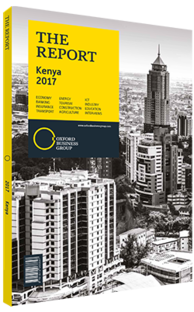New instruments launch on Kenya's capital markets
As part of Kenya’s Capital Markets Master Plan 2014-23, issued by the Capital Markets Authority (CMA), the country aims to deepen and expand its capital markets. The strategy outlines a number of reforms, but chief among them is the launch of new instruments, which it is hoped will not only attract new capital – both from retail investors, as with the M-Akiba mobile bond, and from institutional investors – but also increase trading churn, something which is frequently low in both emerging and frontier markets. REITs: In line with the push by regulators to expand property investment options across the continent, the CMA has provided guidelines for real estate investment trusts (REITs). Kenya’s REITs are linked to one of the more dynamic real estate sectors on the continent; in the five years to June 2016 real estate provided an average return on investment of 25%, according to local advisory firm I&M Burbidge Capital.
Three regulated structures have now been created: D-REITs for greenfield projects across different property and infrastructure categories; I-REITs which pay 80% of earnings as dividends through rental properties; and Islamic REITs. The first listing on the new REIT segment of the NSE came in December 2015, when Stanlib Fahari’s I-REIT started trading. It raised KSh3.6bn ($35.1m) after offering 625m units at KSh20 ($0.20) each, above the minimum threshold of KSh2.6bn ($25.4m) but only 29% of the targeted KSh12.5bn ($122m). The funds came from a range of investors, including the International Finance Corporation and Stanlib’s South Africa-based parent Liberty Group; the Treasury also invested KSh262m ($2.6m). A total of 25% of its assets were to be invested in cash and cash equivalents and 75% in real-estate projects. The share listed at KSh20 ($0.20) but was trading at around KSh13.80 ($0.13) in line with a general softening in the market and below asset value by mid-October.
In August 2016 private equity and real estate firm Fusion Capital sought to raise KSh2.3bn ($22.4m) through the first D-REIT, to raise funds for the development of a greenfield mixed-use project in Meru County. It offered 100m shares in a trust and extended the offer twice, but withdrew it after raising 38% from only four investors and failing to reach the minimum threshold. Eric Musau, senior research analyst at Standard Investment Bank, told OBG that unfamiliarity is part of the problem. “New products tend to get off to a slow start, especially if there is no initial success story. There is need for a more attractive risk-return profile for these products as well as additional launches to strike the appropriate return rate – more appropriate choices for asset managers will be good for the market as a whole.”
Derivatives
Another initiative waiting for launch is the derivatives market, set up by NSE to facilitate trading in futures. The bourse studied derivatives exchanges in India, South Africa and Brazil, taking advice on systems at South Africa’s Johannesburg Stock Exchange before announcing its plans to launch trading in two categories: the first futures will cover equities (single-stock futures and equity-index futures) and currencies (Kenya shilling-US dollar pair).
The aim is to offer electronically traded standardised products that can be cleared centrally by the NSE clearing house (NSE Clear), which will act as legal counterparty for both buyer and seller. All contracts will sit with NSE Clear, reducing counterparty risk. In early 2016 the bourse announced that six banks – Barclays Kenya, Co-operative Bank, CfC Stanbic, NIC Bank, Chase Bank and Commercial Bank of Africa – had been approved to act as clearing members.
The launch of the market has faced delays since 2015, initially due to the sorting of the clearing house and funds to guarantee settlements and protect investors, and later on by the need for CMA to approve the proposed contract fees, which were KSh15 ($0.15)- KSh25 ($0.24) per contract. Clearing members are expected to charge 50-100% on top of that. The NSE also said it needed time for more training and systems.
You have reached the limit of premium articles you can view for free.
Choose from the options below to purchase print or digital editions of our Reports. You can also purchase a website subscription giving you unlimited access to all of our Reports online for 12 months.
If you have already purchased this Report or have a website subscription, please login to continue.

